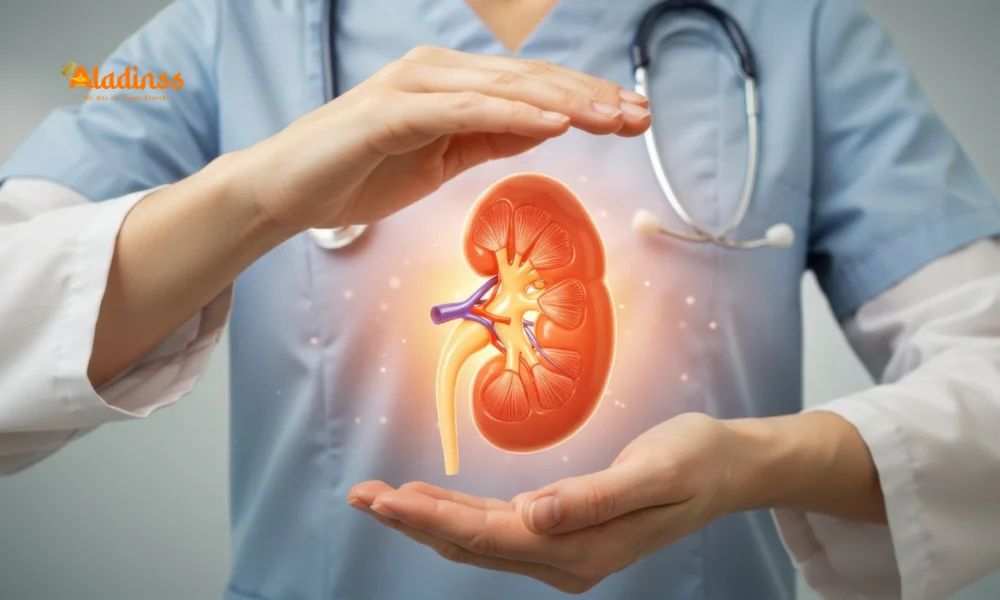Living with One Kidney: Full Lifespan Possible

Living with One Kidney: Lifespan, Risks, and Essential Care Tips
While the human body comes equipped with two kidneys to filter waste and regulate fluids, countless individuals thrive with just one-be it after a life-saving donation or medical removal. The burning question remains: how long can someone expect to live with one kidney? Medical consensus affirms that, provided the solitary organ remains robust, a full, vibrant lifespan is entirely achievable. However, vigilance is paramount to sidestep complications like hypertension or strain on the renal system. This living with one kidney lifespan guide delves into the realities, drawing from expert insights to empower those navigating this journey with confidence and proactive health strategies.
From compensatory adaptations where the lone kidney ramps up efficiency to tailored lifestyle tweaks, success stories abound among donors and patients alike. As kidney health awareness grows-especially amid rising chronic conditions in India-understanding these dynamics can transform potential vulnerabilities into manageable routines, ensuring years of quality life without undue worry.

With advancements in nephrology and accessible monitoring, the prognosis is brighter than ever. Whether you're a prospective donor or managing post-surgery, arming yourself with knowledge is the first step toward enduring renal resilience.
Compensatory Power: How One Kidney Sustains a Normal Lifespan
The marvel of human physiology shines brightest in adaptation: upon losing one kidney, the survivor hypertrophies, enlarging by up to 50% within weeks to shoulder the workload of both. This hyperfiltration boosts glomerular filtration rate (GFR) to near-normal levels, typically 80-90% of dual-kidney capacity, allowing recipients to pursue active lives-running marathons, climbing careers, or raising families-without perceptible deficits.
Longitudinal studies, like those from the National Kidney Foundation, track donors over decades, revealing no shortened lifespan; many reach 80+ years with vigilant care. In India, where live donations surge 15% annually per NOTTO data, success rates hover at 95%, underscoring that a healthy solitary kidney isn't a hindrance but a testament to bodily ingenuity.
Factors like age at donation matter: under-50s fare best, with minimal 1-2% chronic kidney disease risk over 20 years. Hydration, exercise, and avoidance of nephrotoxins like excessive NSAIDs preserve this equilibrium, ensuring the organ's longevity mirrors that of its paired counterpart.
- Hypertrophy: Kidney enlarges, filtering 120-150 ml/min per 1.73m².
- Donor outcomes: 99% graft survival at one year, normal life expectancy.
- India stats: 5,000+ annual transplants, 90% living donors thrive.
- Global evidence: 30-year follow-ups show no excess mortality.
This resilience demystifies the fear, positioning single-kidney living as viable and vibrant, contingent on informed stewardship.
Also Read: Carbs in Indian Diet Cause Weight Gain
Hypertension Watch: Managing Blood Pressure for Renal Longevity
The solo kidney's intensified labor elevates hypertension odds by 20-30%, as per Mayo Clinic cohorts, straining vessels and accelerating sclerosis if unchecked. Early detection via home monitors-aiming below 130/80 mmHg-mitigates this, with ACE inhibitors like enalapril proving renal-protective in trials.
Lifestyle levers amplify: 150 minutes weekly aerobics, like brisk walks, slash systolic by 5-8 mmHg, while potassium-rich bananas counter sodium's grip. In India, where 25% adults battle high BP per ICMR, single-kidney folks must prioritize annual echoes to preempt proteinuria.
Neglect invites a vicious cycle-elevated pressure erodes GFR at 2-3 ml/min yearly-but adherence flips the script, sustaining function into the 70s and beyond.
Dietary Blueprint: Low-Salt, Balanced Nutrition for Kidney Vitality
Renal-friendly eating curbs overload: cap sodium at 2g daily, swapping iodized salt for herbs in curries, averting fluid retention that taxes filtration. Protein moderation-0.8g/kg body weight-prevents uremia, favoring lean sources like tofu over red meats to ease ammonia burdens.
Potassium vigilance suits stages 3-4 CKD: limit bananas to half, opt for apples; phosphorus curbs via fresh dairy over processed cheeses. Hydration's gold standard-2-3 liters daily-flushes toxins, with urine color as a telltale gauge.
Mediterranean-inspired plates-veggie stir-fries, quinoa salads-yield 15% GFR preservation, per Nephrology Dialysis Transplantation, blending flavor with function for enduring health.
Hydration Imperative: Water's Role in Filtration Efficiency
Dehydration shrinks renal plasma flow by 20%, concentrating waste and inviting stones or acute injury-risks doubled in solo-kidney scenarios. Aim for pale yellow urine via spaced sips, infusing cumin water for desi twists that aid diuresis without overload.
Summer heatwaves amplify needs to 4 liters, countering sweat losses; caffeine's mild diuretic effect warrants compensatory ounces. Chronic under-hydrators face 10% GFR dips, but consistent intake restores equilibrium, per Journal of Urology.
Risk Mitigation: Safeguarding Against Injury and Strain
The lone kidney's flank vulnerability demands caution: seatbelts low, contact sports like rugby shelved for yoga or swimming that nurture without peril. NSAIDs-ibuprofen's allure-curtail to occasions, favoring paracetamol to dodge vasoconstriction.
Annual ultrasounds flag anomalies early; in India, where road mishaps claim 1.5 lakh lives yearly, protective vests for bikers add layers. This prudence extends lifespan parity, with donors reporting zero quality-of-life drops post-five years.
Monitoring Milestones: GFR Tests and Routine Vigilance
GFR-gold standard at 90+ ml/min for health-warrants biannual creatinine assays, urine albumin checks to preempt microalbuminuria. Home kits democratize tracking, alerting to dips below 60 that signal stage 3 CKD.
Tele-nephrology apps bridge rural gaps, with AI flagging trends for timely interventions. In a donor-dense nation like India-10,000 annually-this regimen ensures 95% maintain >80 GFR at decade's end.
Empowering Longevity: Success Stories and Global Insights
Donor tales inspire: a Mumbai surgeon, 25 years post-nephrectomy, marathons yearly; a Delhi teacher, 15 years on, savors grandkids sans limits. Globally, 50,000 US donors echo this, with zero excess mortality per UNOS.
India's context-pollution, infections-amplifies needs, but community drives like Apollo's screening camps democratize care. Ultimately, one kidney isn't diminishment but a call to cherish the gift of adaptation, living fully, fearlessly.
Comment / Reply From
No comments yet. Be the first to comment!






